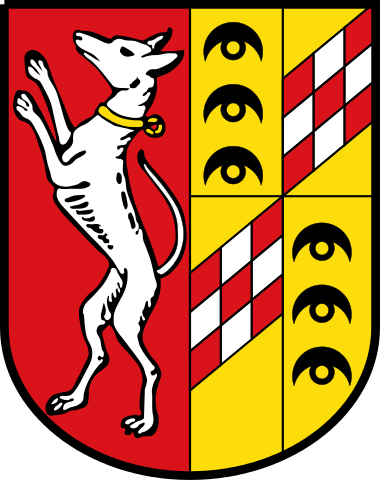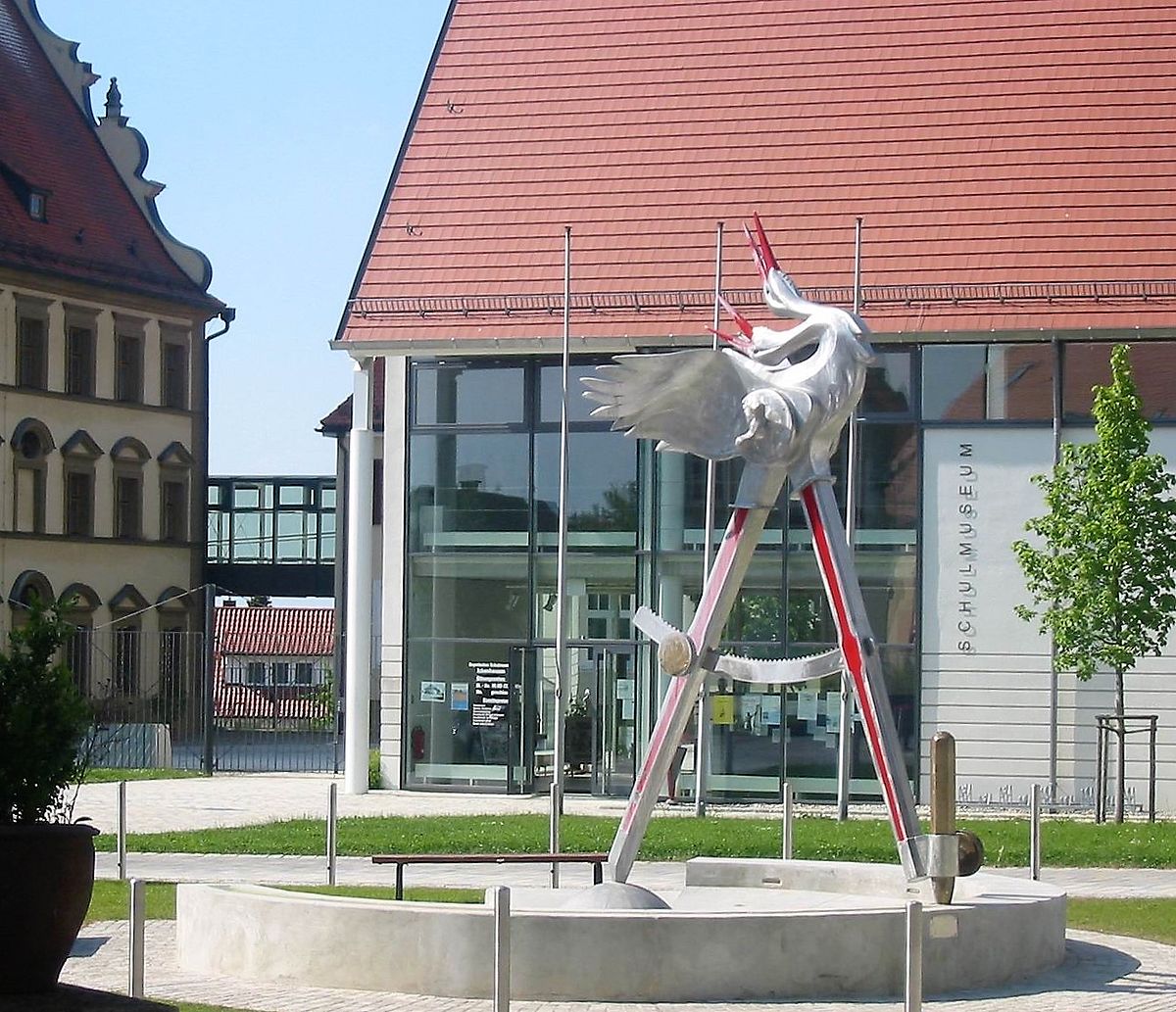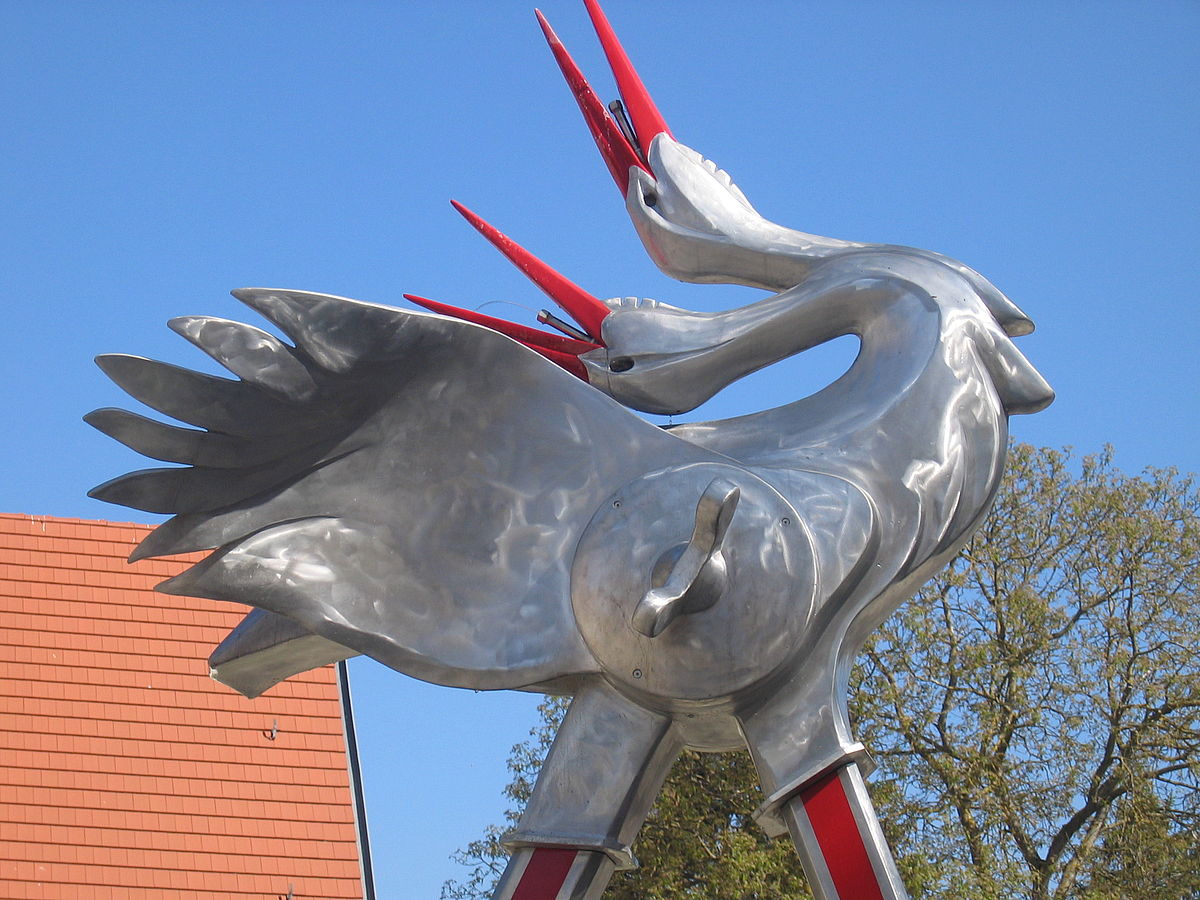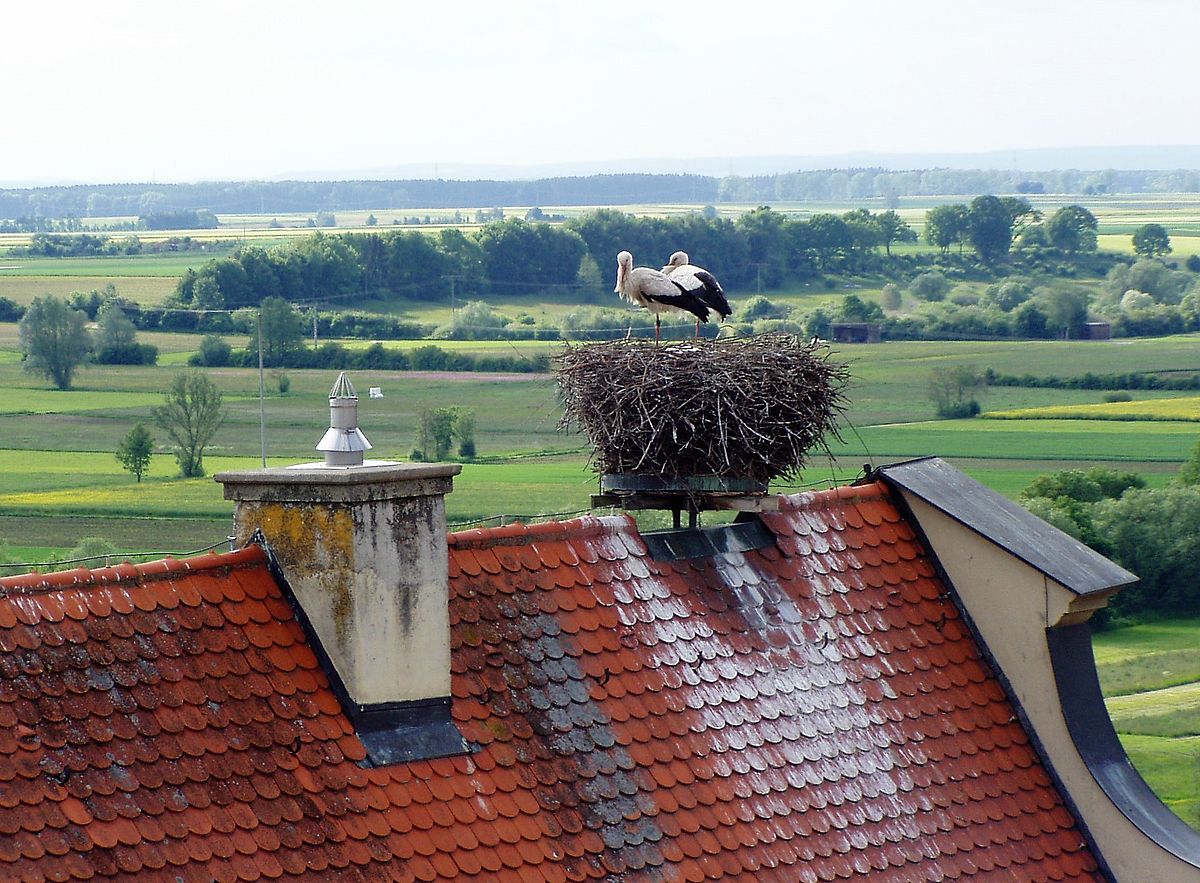Schlossplatz - Storchenbrunnen
Storchenbrunnen
Der Brunnen soll eine Erinnerung daran sein, dass die alljährliche Belebung des Storchennestes auf dem Dach des Unteren Schlosses (früher Schule, heute Teil des Bayer. Schulmuseums) seit Generationen willkommen ist.
Der doppelköpfige Storch (das Storchenpaar) steht auf seinen als Zirkel gestalteten Beinen. Der Zirkel als Instrument des Messens und Konstruierens, der Bleistift als Instrument des Schreibens, sollen fundamentale mediale Kulturtechniken zum Ausdruck bringen, ohne die das Erfassen von Räumen, Zeiten und Zeichen nicht denkbar wäre. Insofern ist der Standort vor dem Bayerischen Schulmuseum themengebend.
Der Zirkelschlag, als gelber, beleuchteter Kreisbogen dargestellt, beschreibt wichtige Daten der Stadtgeschichte.
Die Aufteilung des Brunnenbeckens symbolisiert einen Kompass. Der „Innere Kompass“ ist nicht nur für Störche richtungsweisend, sondern dient auch allen Menschen als Orientierungshilfe.
Der nach Westen hin geöffnete Brunnenkreis mag verstanden werden als Sinnbild der Einheit, der Versöhnlichkeit, der Integration, welche die Stadt Ichenhausen in den Zeitläufen der Geschichte zu bewältigen hatte.
Brunnenentwurf und Ausführung:
Lucie Wegmann & Daniel Moritz Lehr
The Stork Fountain
The fountain is supposed to be a reminder that the yearly revival of the stork’s nest on the roof of the Lower Palace [Unteres Schloss] (former school house, today part of the Bavarian School Museum) has been welcome for generations.
The double-headed stork (the stork couple) is standing on legs that are designed to resemble a pair of compasses. The compass as a measuring and construction tool and the pencil as a writing instrument are supposed to express fundamental medial culture techniques without which measuring space and time as well as drawing would be unthinkable. Insofar, its location in front of the Bavarian School Museum sets its theme.
The circle drawn by the compass which is represented by a lit yellow circular arc maps out important dates of the town’s history.
The partitioning of the basin symbolizes a compass rose. The “Inner Compass” not only directs the storks on their travels but also serves all humans as a guidance tool.
The westwardly open basin circle can be understood as a symbol for the unification, reconciliation and integration processes the town of Ichenhausen had to struggle with in the course of its history.
La fontaine des cigognes
Cette fontaine rappelle les cigognes qui chaque année reviennent couver dans leur nid sur le toit du château inferieur (à l’origine l’ancienne école, de nos jours une partie du Musée Bavarois de l’École, et sont vivement attendues depuis des générations.
La cigogne à double tête (un couple de cigognes) se tient debout sur un compas en guise pattes.
Le compas, instrument de mesure et de construction, le crayon, instrument d’écriture, permettent d’exprimer les techniques culturelles fondamentales sans lesquelles il serait impossible de comprendre l’espace, le temps et les signes.
La place devant le Musée de Bavarois de l’École thématise ce sujet.
La trace de compas, cet arc circulaire jaune illuminé, rappelle des nombreuses dates importantes de la ville.
La répartition du bassin de la fontaine symbolise une boussole.
La boussole intérieure ne sert pas seulement à l’orientation des cigognes mais aussi á nous guider.
La bordure de la fontaine est ouverte à l’est et peut être interprétée comme un symbole d’unité.
Conception et exécution de la fontaine
Fontana della cicogna
La fontana, simbolo di una rivilizzazione annuale del nido di cicogne, sul tetto del castello inferiore (prima scuola, ora Museo scolastico di Baviera). La doppia testa della cicogna (coppia) porta delle gambe a forma di compasso. Il compasso strumento di misura e di costruzione, la matita come strumento della scrittura, sono oggetti fondamentali per i beni culturari, senza quali non sarebbe possibile misurare tempo, luoghi o segni. Il luogo davanti al Museo è a tema. Il cerchio di luce gialla descrive dati importanti della storia di Ichenhausen. La divisione della fontana simbolizza una bussola. “ la bussola interna” non solo fa capire alla cicogna in che direzione andare, ma anche agli esseri umani. L`apertura del cerchio della fontana, del quale è aperto verso la parte ovest, vale come emblema di umanità, perdono e di integrazione, dificoltà con cui la città ha dovuto affrontare con il passare del tempo.
Bozza ed esecutore
Lucie Wegmann & Daniel Moritz Lehr



